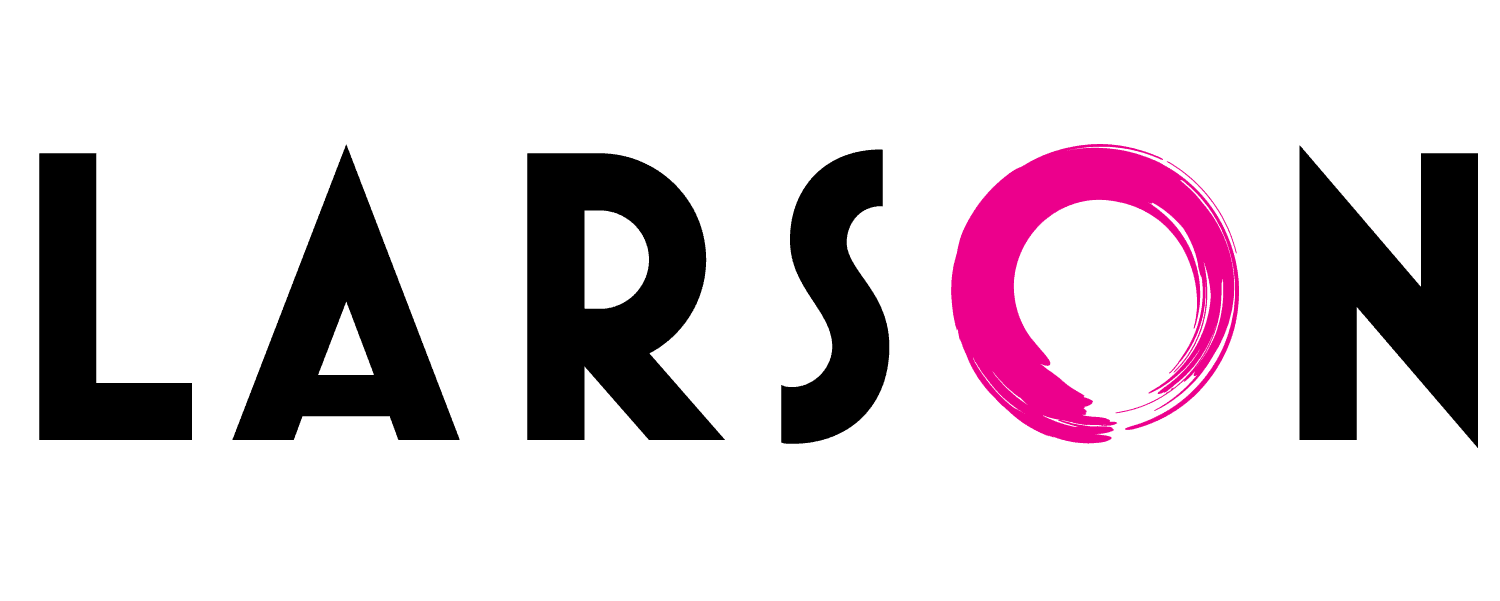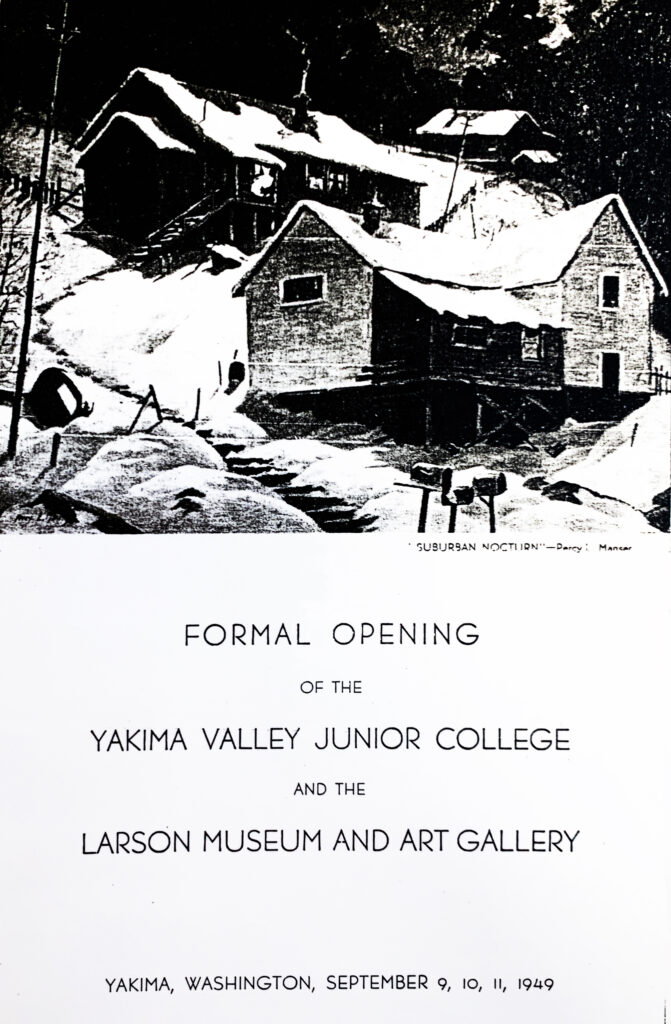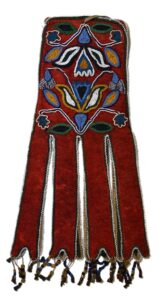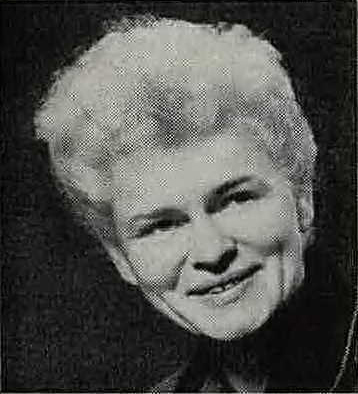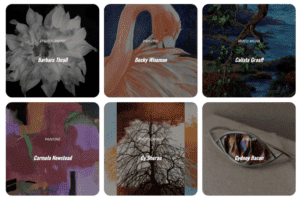The faculty include Sarah Spurgeon, pastels; Glenn Hogue, ceramics; Josephine Burley, sculpture; Reino Randall, silkscreen, textiles, copper, pewter, and commercial layouts; and Neil Koch, watercolor and tempera. Although the gallery was closed on Christmas day, regular hours followed until exhibit closing on January 5, 1950.
Hungarian born artist Francis de Erdely and professor of art with the University of Southern California, would be featured in the next exhibit at Larson. The exhibit of 40 drawings featured mainly drawings of the human figure and a few watercolors. It provided the general public with an opportunity to see the work of an international artist and provided art students in Yakima an opportunity to study technique. The work of Erdely opened on January 8, 1950 and continued through February 5.
Yakima artist and instructor at Franklin Junior High School John D. Reppeteaux, displayed 27 of his paintings for an opening on February 12, 1950. The opening “drew hundreds” and stayed open an hour after customary closing time. The show closed on March 2, 1950. A selection of the work would be exhibited later that summer at Maryhill Museum.
On March 5, The Fritz L. Wertz collection of paintings opened. Considered a “one-man show” like Reppeteaux’s, the subjects were based on pioneer scenes and people around Gold Hill, Oregon. Wertz referred to himself as a “primitive hillbilly artist”. In addition to the watercolors by Wertz, the Larson Gallery and Museum also displayed 100 soap carvings made by students and adults, and a the Japanese and Korean collection of Norman Marshall. Marshall was an instructor at Yakima Valley Junior College who had served as a civilian employee for the military in Korea and Japan. The exhibit continued through March 24, when it was replaced with an exhibit of watercolors and drawings by Portland artist Menalkas Selander.
During the opening of the Selander exhibit, he gave a demonstration in the college’s little theatre room, “which was filled to capacity with art teachers, students, and others interested in art.” The original date for closing of the exhibit was April 9, but was extended through Tuesday, April 11, 1950 to allow more visitors. By April 4, it had been seen by 1200 adults plus numerous school groups.
From April 13 to the 27th, a traveling exhibit of seven Northwest watercolor artists from the Henry Art Gallery at the University of Washington opened. The artists were all instructors at Washington State Colleges–Douglas A. Murray, Andrew L Hoffmeister, James E. Peck, Mitchell Jamison, Ray Hill, Alden C. Mason, and Neil A. Koch.
Then on April 30, a traveling exhibit of 27 watercolors opened at Larson featured the artwork from the Women Painters of Washington. Included in the exhibit were two watercolors, Indian Village at Neah Bay and After the Blizzard by Dorothy Dolph Jensen, one of the founders of the Women Painters of Washington. On of the co-founders, Myra Wiggens, also was exhibited and touted as a relative of Reuben Benz of Yakima.
In addition to the traveling exhibit were three watercolors by Blanche McLane Cook, who formerly taught at Yakima Valley Junior College. The Sisters of Providence, celebrating their 75th year, had one case filled with historical items, several cases were filled with artifact from the Daughters of the Pioneers of Washington, and one with a collection of elephants belonging to Mrs. S. P. Street. This exhibit concluded on May 18.
The first year of the Larson Museum and Gallery concluded with the exhibit by artist Maude Walling Wanker in partnership with the Yakima Valley Art Association. She was a founding officer of the Oregon Amateur Watercolor Society and the Master Watercolor Association.
The gallery closed for the summer on June 10.
 1949-1950
1949-1950